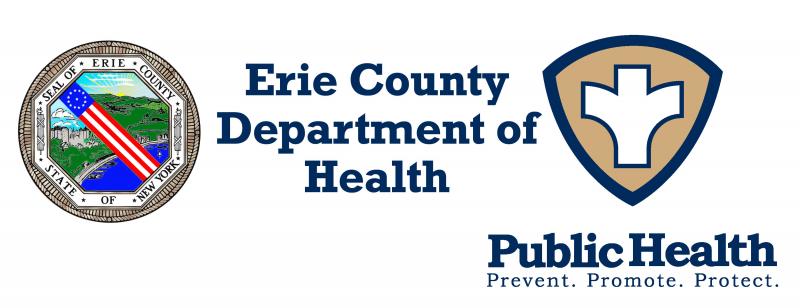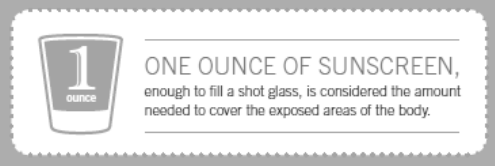Modified: June 21, 2016 4:05pm
Latest News

PRESS RELEASE
From the Office of the Commissioner of Health, Dr. Gale R. Burstein
Date June 21, 2016
CONTACT: Mary C. St. Mary/Mary.StMary@Erie.Gov
Phone: 716.858.4941/ Mobile: 716.253.3925
Sun Exposure Increases Skin Cancer Risk
Tanned Skin is NOT Healthy Skin!
ERIE COUNTY, NY— Skin cancer is the most common form of cancer in the United States. The Centers for Disease Control and Prevention (“CDC”) report that melanomas of the skin were responsible for 9,251 deaths in 2012, and more than 67,000 melanoma skin cancers were diagnosed.[1] Despite these alarming statistics, people of all ages continue to overexpose themselves to harmful ultraviolet radiation from the sun and at tanning salons.
“Melanoma is the deadliest form of skin cancer, and it is on the rise,” said Erie County Health Commissioner Dr. Gale Burstein. “The rate of people getting melanoma continues to increase every year compared to the rates of most other cancers, which are declining. Protect yourself from the sun by wearing a hat and clothes that cover your skin, finding some shade if you are outside, especially in the middle of the day when the dangerous rays from the sun are most intense, and applying broad-spectrum sunscreen with a minimum SPF of 30.”
Here are some important guidelines to keep you and your family safe in the summer sun:
Don’t Skimp on Sun Protection 
Proper sun protection is essential year-round since the sun’s ultraviolet (UV) rays are present every day. Skin cancer is strongly linked to sun exposure. Nearly 90 percent of skin cancers are caused by the sun’s UV rays. For that reason, it’s critical to follow a complete sun protection regimen to help prevent skin cancer.
Incorporate these sun protection tips into your daily routine:
- Seek the shade, especially during the sun’s peak hours, between 10 a.m. and 4 p.m.
- Do not burn.
- Cover up with clothing, including a broad-brimmed hat and UV-blocking sunglasses.
- Use a broad spectrum (UVA/UVB) sunscreen with an SPF of 15 or higher every day. For extended outdoor activity, use a water-resistant, broad spectrum (UVA/UVB) sunscreen with an SPF of 30 or higher.
- Apply 1 ounce (about the size of a golf ball) of sunscreen to your entire body 30 minutes before going outside.
- Reapply sunscreen every two hours and after swimming or excessive sweating.
Visit the Dermatologist Annually for a Professional Skin Exam
While skin cancer is the most common cancer in the world, it’s also one of the most treatable cancers when detected early. A yearly full-body skin exam performed by a dermatologist is critical, and can be lifesaving. In fact, the five-year survival rate for patients whose melanomas are detected early is 98 percent, and this survival rate falls to 16 percent once the disease spreads to distant organs.
Perform Routine Self-Exams
In addition to having a professional skin check annually, it’s important to examine your skin on a monthly basis to monitor for any new, changing or suspicious lesions. If you notice something new or changing, see a physician immediately. Performed regularly, self-exams should take no more than 10 to 15 minutes. Afraid you’ll forget? Make self-exams a habit by scheduling a recurring reminder in your cell phone.
Ditch Tanning
There is no such thing as a safe or healthy tan--a tan represents skin damage. Tans are the skin’s attempt to repair itself from UV damage from the sun or tanning lamps. If you have a tan, you have sustained skin cell damage. These imperfect repairs cause gene defects that can lead to skin cancer as well as skin aging, including wrinkles, leathery skin and age spots.
Just one tanning bed visit before the age of 35 years increases melanoma risk by 75 percent!
“Early detection is vital in the fight against skin cancer, so everyone should regularly perform skin self-exams,” concluded Burstein. “If you notice any irregular spots on your skin, or anything changing, itching or bleeding, see a dermatologist.” For more information on skin cancer prevention and detection, visit SpotSkinCancer.org. There, you can also find instructions on how to perform a skin self-exam, download a body mole map for tracking changes in your skin and find additional useful information to protect your skin.# # #
For more information:
American Academy of Dermatology
Centers for Disease Control and Prevention
[1] 2012 is the most recent year that numbers are available.

